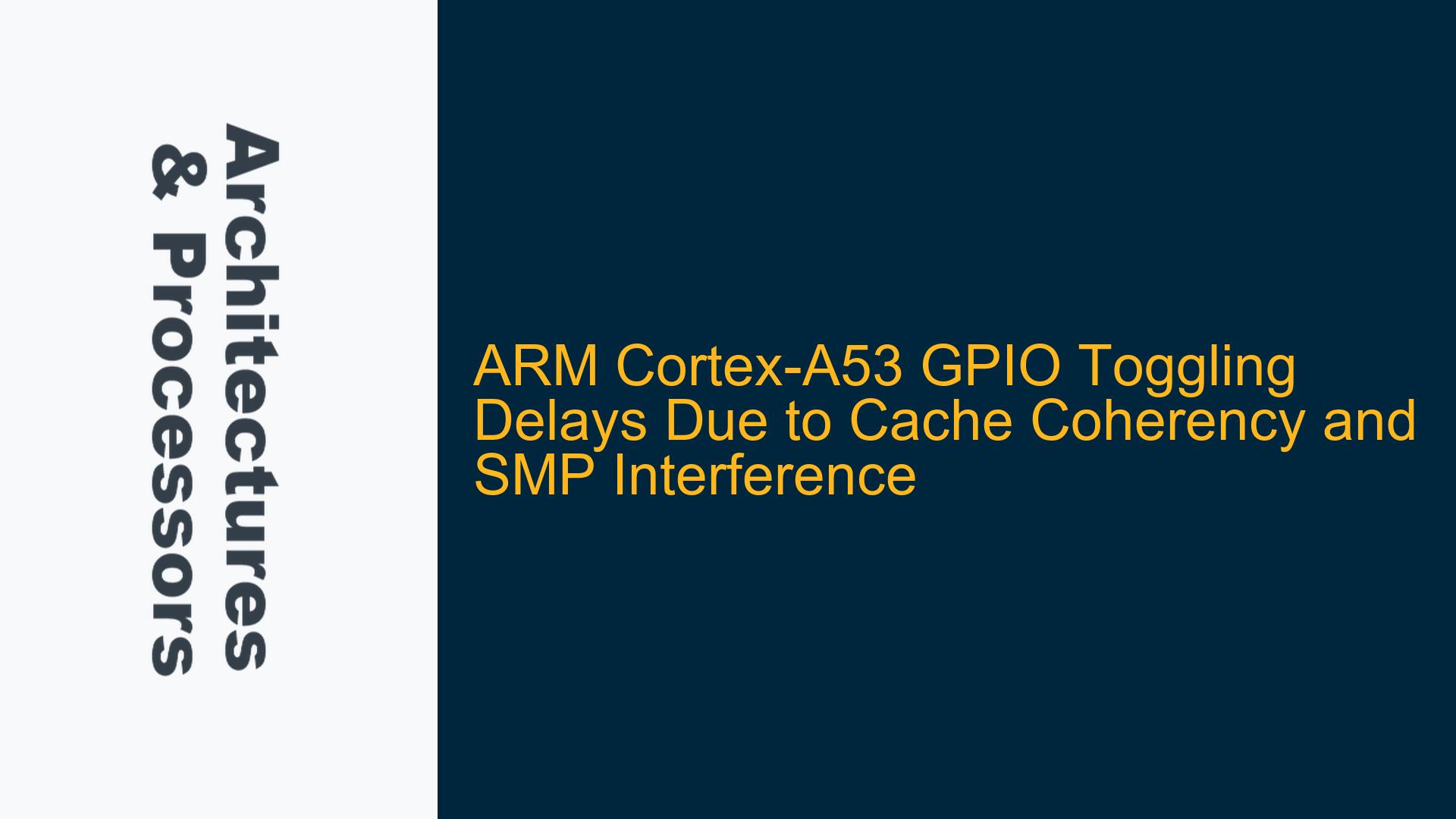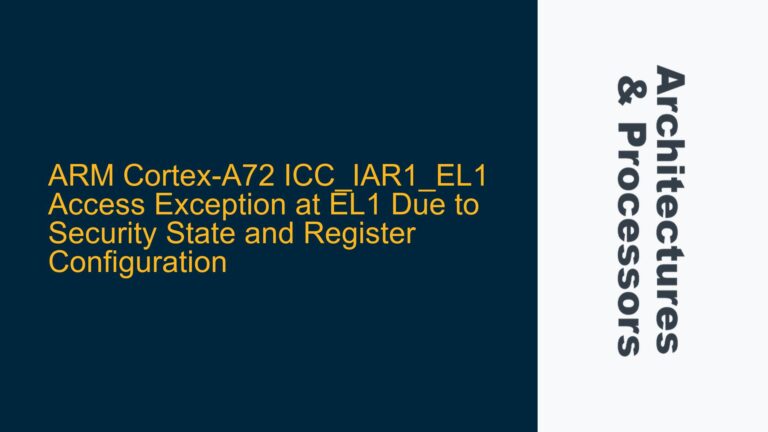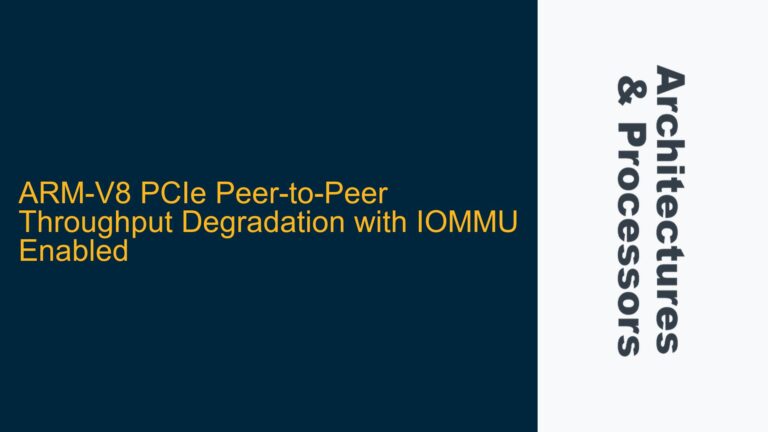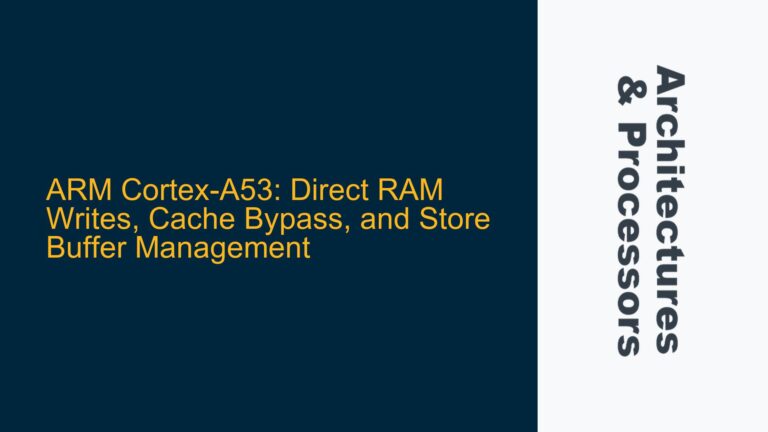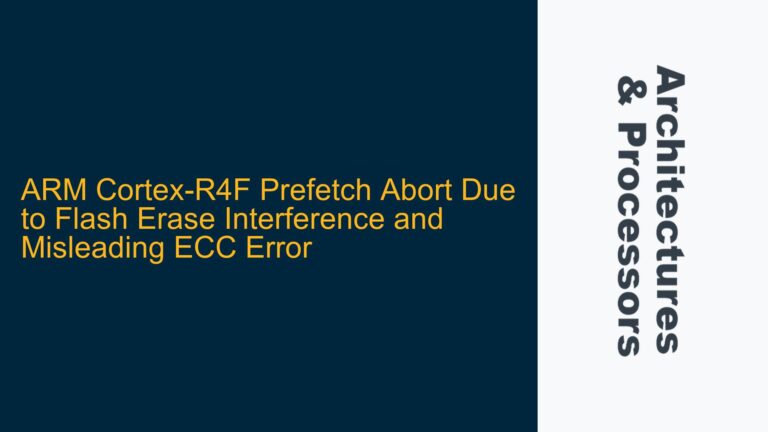ARM Cortex-A53 GPIO Toggling Delays Under High-Frequency Operation
When developing a bit-banging driver for a Raspberry Pi 3 (equipped with a quad-core ARM Cortex-A53 processor), unexpected delays in GPIO toggling at high frequencies (approximately 1 MHz) were observed. These delays manifest as gaps in the signal, sometimes exceeding 5 microseconds, when monitored with an oscilloscope. Notably, this issue does not occur on a single-core Raspberry Pi Zero (ARM1176JZF-S), where the signal remains clean and consistent at the same frequency. The delays on the Raspberry Pi 3 are attributed to hardware interference from the other cores in the symmetric multiprocessing (SMP) configuration. This issue highlights the challenges of real-time performance in multi-core systems, particularly when dealing with cache coherency and inter-core synchronization mechanisms.
The Cortex-A53 is a 64-bit ARMv8-A processor designed for efficiency and scalability, often used in embedded systems and mobile devices. Its multi-core architecture introduces complexities such as cache coherency, memory barriers, and shared resource contention, which can impact real-time performance. In this scenario, the GPIO toggling loop running on one core (CPU0) is affected by activities on the other cores (CPU1-CPU3), leading to unpredictable delays. Understanding the root cause of these delays requires a deep dive into the Cortex-A53 architecture, cache coherency mechanisms, and the impact of SMP on real-time tasks.
Cache Coherency and SMP Interference in Cortex-A53
The primary cause of the observed delays in GPIO toggling on the Raspberry Pi 3 is cache coherency interference in the Cortex-A53’s SMP environment. In a multi-core system like the Cortex-A53, each core has its own L1 cache, while the L2 cache is typically shared among the cores. Cache coherency ensures that all cores have a consistent view of memory, but maintaining this coherency introduces overhead, especially when multiple cores access shared resources simultaneously.
When CPU0 executes the GPIO toggling loop, it repeatedly accesses memory-mapped GPIO registers. These accesses are cached in CPU0’s L1 cache for performance reasons. However, if CPU1, CPU2, or CPU3 performs operations that affect the same memory region or require cache line invalidations, CPU0 may experience stalls while waiting for cache coherency operations to complete. These stalls manifest as delays in the GPIO toggling signal.
Additionally, the Cortex-A53 employs memory barrier instructions such as Data Memory Barrier (DMB) and Data Synchronization Barrier (DSB) to enforce ordering of memory operations. These instructions ensure that memory accesses are completed in the correct order, but they can also introduce latency, particularly in high-frequency loops where memory operations are frequent. If other cores execute barrier instructions, CPU0 may be forced to wait, further exacerbating the delays.
Another factor contributing to the delays is the Linux kernel’s scheduling and interrupt handling. Although IRQ and FIQ were disabled in the test, the kernel may still perform background tasks or context switches that indirectly affect CPU0’s performance. For example, kernel threads running on other cores may compete for shared resources, such as the memory bus or L2 cache, leading to contention and increased latency for CPU0.
Mitigating GPIO Toggling Delays Through Cache Management and Core Isolation
To address the GPIO toggling delays on the Cortex-A53, several strategies can be employed to minimize cache coherency interference and improve real-time performance. These strategies involve cache management, core isolation, and careful use of memory barriers.
Cache Management: One effective approach is to bypass the cache for memory-mapped GPIO registers. By marking the GPIO register region as uncacheable, CPU0 can access the registers directly without involving the cache, eliminating cache coherency overhead. This can be achieved by modifying the memory attributes in the page tables or using the appropriate memory type in the ARMv8-A memory model (e.g., Device-nGnRnE memory type).
Core Isolation: Isolating CPU0 from the other cores can reduce interference and improve real-time performance. This can be done by pinning the GPIO toggling loop to CPU0 and disabling the other cores or placing them in a low-power state. Alternatively, the Linux kernel’s CPU affinity settings can be used to restrict the execution of other tasks to CPU1-CPU3, leaving CPU0 dedicated to the real-time task.
Memory Barrier Optimization: Minimizing the use of memory barriers in the GPIO toggling loop can reduce latency. If memory barriers are necessary, they should be placed strategically to avoid excessive stalls. For example, a DSB instruction can be used after the last memory access in the loop to ensure all previous accesses are completed before proceeding.
Real-Time Kernel Configuration: Using a real-time Linux kernel or a bare-metal environment can provide more deterministic performance by reducing the impact of kernel scheduling and background tasks. Real-time kernels are designed to minimize latency and prioritize time-critical tasks, making them well-suited for high-frequency GPIO toggling.
Hardware-Specific Optimizations: The Raspberry Pi 3’s Broadcom BCM2837 SoC includes a GPU and other peripherals that may compete for memory bandwidth. Disabling or reducing the activity of these components can free up resources for CPU0 and improve GPIO toggling performance.
By implementing these strategies, the GPIO toggling delays on the Cortex-A53 can be significantly reduced, enabling reliable high-frequency operation. The key is to balance the benefits of multi-core processing with the need for deterministic real-time performance, ensuring that critical tasks are not adversely affected by cache coherency and SMP interference.
